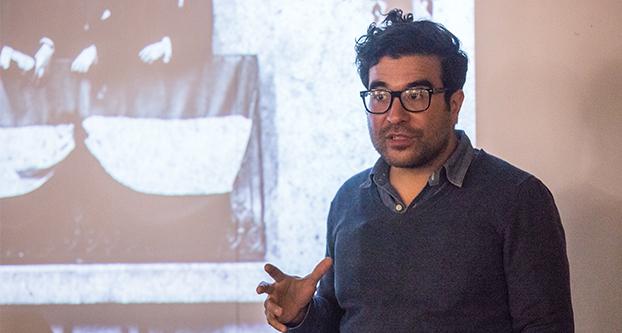Diego Flores Magón, great-grandson of Mexican Revolution intellectual and journalist Enrique Flores Magón, visited Fresno State on Feb. 21 to shed light on his great-grandfather’s role in the revolution, and how he is preserving and sharing his legacy.
Romeo Guzman, assistant professor at the department of history and director of the Valley Public History Initiative, said he and Magón were friends long before the project began.
“Before the Magón archive was a reality, it was a ruin,” Guzman said. “That moment has been with me forever. Before Diego had an archive, we were friends, and we were actively thinking about [the archive].”
He said when the project began, the intent for Magón and himself was to see what the “real history” is and how much can be retrieved.
The next question for them, Guzman said, was, “What is an archive and how do we build an archive?”
The story began with Enrique Flores Magón when a Mexican weekly journal, El Hijo del Ahuizote, was published criticizing the ever growing “fascist” government in 1903.
Magón said the regime in Mexico had perpetrated abuse of power, quelled freedom of speech and repressed the electoral process.
Each name associated with an article was published with a pseudonym. However, the photo on the front page displayed the faces of each of the authors, including Magón.
He said the showing of their faces was to prove their dedication. They were jailed shortly after the articles were published.
Once the revolution began in 1910, Magón said, “the “radicals,” as the revolutionists were called, became increasingly isolated and the U.S. became hostile toward the radicals.
He said, “Enrique, he had a very rough life. He was put in jail several times, even in Mexico.”
Magón said his great-grandfather would “write his own memoirs and cultivate his own archive. He did it as an effort to be recognized as a revolutionary because the revolution lost.”
He said that his great-grandfather asked all members of the revolutionist party to state their activities so that he could make an all-inclusive archive. Magón now has more than 12,000 documents and 25,000 images — history from South America and the U.S.
He said that accessing an archive is not an easy process and that he worries what the information will be used for and by whom.
“There is something really ugly about the [idea of an] archive,” Magón said.
He also said that he worries about the delicacy of archives and their safety in regards to maintaining their quality.
“I am very optimistic about having the collection made electronic,” Magón said, laughing.
Therefore, they created their own archive. Casa de el Hijo del Ahuizote is the name of the archive, and it is located in Mexico City.
“This project has [been] constructed out of desire,” Magón said.
He said, in the present, the archive serves as a way to reconstitute the network of revolutionaries, if needed.
Magón said the archive proved that the discourse about the revolution is neutralized by history. He then shared his favorite saying, “The moment it becomes historial, it ceases to become threatening — the more you minimize history, the greater it becomes a threat.”
Los Angeles-based printmaker and first-generation Mexican-American Daniel González said, “Finding my space in L.A., meant having to look back into its history and immigration.”
González, who is from Boyle Heights, a place commonly known for its immigration, said, “I was really conscious of the history and how important it was for Magón to visit spaces in L.A.”
González was working on a project that had lost its funding, so he found himself immersed in a different project shortly after. He decided to create prints emulating the “El Hijo del Ahuizote” publication.
He created 3,500 copies and passed them out throughout Mexico City.
González said he was concerned residents would not know what the prints were, but he was wrong. People knew exactly what they were receiving, and they “warmly” received the art, he said.
Although the prints were a hit among residents, he wanted to do more. He asked himself, “How do we activate this space with the material in the archive?”
González put his print skills to the test and printed out large Francis Gothic font letters, dipped them in paint and painted words from the archive on the walls of the Mexico City Metro Station.
The metro station covered the words with newspapers shortly after. To González’s surprise, they requested the sources and the name of the archives be painted on the wall, so that the people of Mexico City can learn more.
González said, “I think it’s valuable to build these relationships as an artist and as a human being.”





